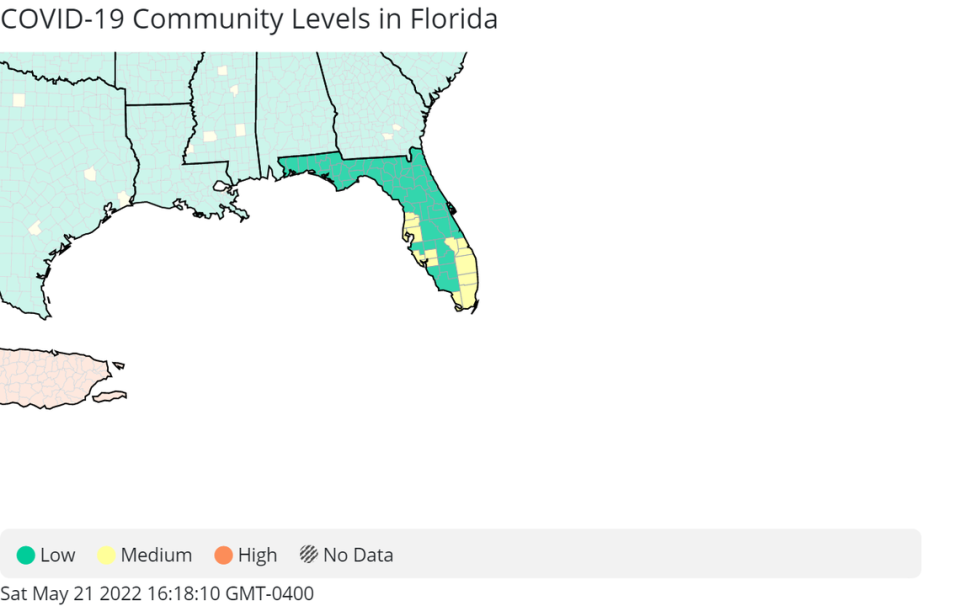New data shows South Florida is at high risk of COVID transmission. There was an error
South Florida is actually at a high COVID community transmission level, and has been since at least Thursday. A data error on the Centers for Disease Control and Prevention website was misrepresenting the current risk, and has still not been completely worked out.
The three largest counties in the state transitioning to a high risk level means residents may have to alter their daily routines and activities as more stringent recommendations are offered by the CDC to not contract and spread the virus.
The agency’s COVID-19 Community Transmission Level county map shows 14 out of 67 Florida counties under a medium risk level with no counties hitting a high level, which includes South Florida.
But this is not the case.
The CDC added a footnote to that map on Thursday explaining that Miami-Dade, Broward and Palm Beach counties should be appearing under a high level of risk due to a data processing error. The error left Florida county level case rates as zero.

There are three CDC risk levels: low, medium and high. Each comes with its own recommendations from the CDC on what a person should do to stay safe.
The difference between a low and medium risk level is small when it comes to these recommendations. Masks are no longer being asked to be warn and vaccines are advised.
When a county reaches a high risk level, a substantial shift occurs — the CDC recommends everyone, regardless of vaccine status, to wear a mask indoors. This is a major change for many Florida residents who had returned to “life before COVID” as the omicron wave subsided in January.
This change in risk levels was not abrupt for the three counties. On May 17, Miami-Dade and Broward were already under medium risk while the rest of the state sat at low.
Since April, cases have trended upward, according to Miami Herald calculations of data published by the Centers for Disease Control and Prevention. An increase in hospitalized COVID patients was not far behind as by late April Florida hospitals were seeing upticks, which has steadily risen since. COVID patients in the ICU, however, only recently began to trend up in mid-May.
These increases have not yet come close to what the state was seeing during the omicron and delta waves earlier this year and last year.

 Yahoo Movies
Yahoo Movies 
